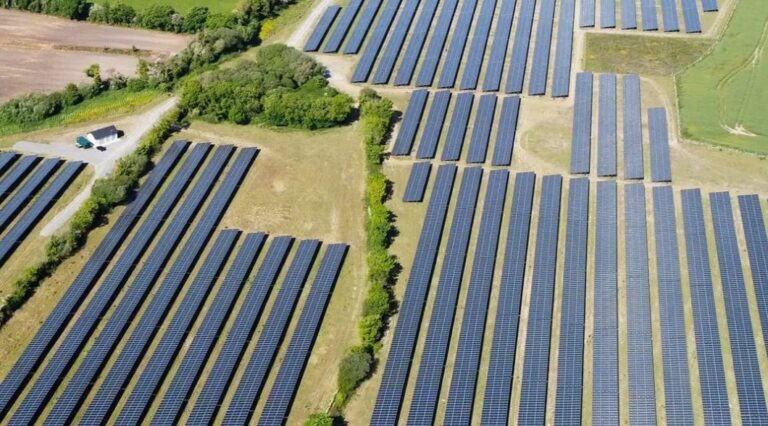Gareth Simkins, senior communications advisor for industry body Solar Energy UK, looks at the year’s progress in the solar sector.
The introduction of stricter energy efficiency regulations in new homes in England has led to a sharp increase in the number of solar installations – although these can be relatively small in capacity compared to renovations. The share of new homes and buildings equipped with photovoltaic solar panels has more than doubled in the past twelve months.
SEUK estimates that 36,506 new-build homes were completed in England in the third quarter of this year, with the latest figures available.[1] Figures from the Microgeneration Certification Scheme (MCS), the standards body for smaller-scale sustainable energy systems, show that 10,720 installations were carried out on new-build homes in the same period. Assuming these were all residential, this indicates that 29% of these new homes are solar powered.
That’s a dramatic jump compared to just 5,731 of the 44,310 new-build homes with solar panels in the last quarter of 2023 – just 13%.
“It is a reasonable assumption that at least a third of new English homes now have solar energy, given the clear trend in the data. This percentage will certainly be much higher by the end of 2025, when the transition to the new regulations should be completed. Similar rules in Scotland have led to panels being fitted in 80% of new homes,” said Chris Hewett, Chief Executive of trade association Solar Energy UK.
“There has been a lot of focus lately on the next version of the Building Standards, the Future Homes Standard, which we expect will be close to mandating substantial solar installations on new homes. But it is important to recognize how existing rules are driving growth in the sector while reducing emissions and homeowners’ bills,” he added.
The increase is the result of the revised ‘Part L’ rules on energy efficiency in homes, which come into full force from June 2023. Although welcome, a resulting decline in the average capacity of systems is less so.
“Before the new rules, the installation of solar energy in new homes in England was determined by local planning requirements or self-builder preference. The planning conditions were applied site-wide and tended to involve concentrating solar installations on a few properties, to meet requirements in the most convenient and cost-effective way. Self-builders, on the other hand, would ensure that their installation was appropriately sized to make a cost-effective contribution to meeting their own energy needs,” says Stuart Elmes, CEO of Viridian Solar, a roof-integrated solar manufacturer.
As the share of new homes with solar PV built by private developers has increased, the average capacity for new construction has therefore fallen, from around 4 kilowatts at the end of 2023 to 2.8 kW in the third quarter of this year.
Meanwhile, the number of retrofits in England has been fluctuating around 8,000 to 10,000 per month for more than a year. Driven by a combination of high energy prices, low installation costs and environmental concerns, this number remains much higher than before the energy price crisis.
Both new build and retrofit aspects of the market have increased the number of roofs with small-scale solar installations in the UK to over 1.6 million – over 170,000 more than at the start of the year. For England alone the figures are 1.3 million, including 135,000 since January. Most MCS installations are mounted on residential roofs, while a smaller proportion are mounted on schools, small businesses, community buildings and the like.
Commercial scale arrays over 50 kW, such as in warehouses, factories and supermarkets, are excluded from the MCS figures. Although precise figures are difficult to track, the market is known to be healthy as well, with a record 31 megawatt project announced at the Port of Liverpool earlier this year, five times larger than the current record holder of 6.5 MW in the port of Hull.


